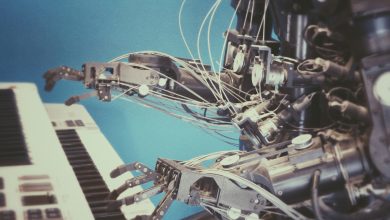Keywords: semantic segmentation polygon, polygon object detection, polygon image annotation
AI is revolutionizing the way we process and interpret images and semantic segmentation is a critical technology that enables AI systems to understand images on a pixel level, allowing for more accurate object detection.
Three steps are involved in semantic segmentation:
Classifying: Classifying a particular visual element.
Localizing: Finding the object and drawing a box around it is known as localizing.
Segmentation: The process of producing a segmentation mask to group the pixels in a localized picture.
In this article, we’ll explore the benefits of semantic segmentation for polygon object detectionand image recognition.
The benefits of semantic segmentation for object detection
1. Semantic segmentation can help to filter out background clutter, making it easier for a detector to find an object of interest.
2. Segmentation can improve object detection by providing more information about the location of an object within an image.
3. Additionally, semantic segmentation can provide contextual information about an object, which can be used to improve detection accuracy.
4. Finally, semantic segmentation can improve object detection under challenging scenarios, such as occlusion and low lighting conditions.
How semantic segmentation can be used for image annotation
AI training systems that rely on images need high-quality and well-annotated data sets. Semantic segmentation polygon can automatically annotate images with labels, saving time and money. Additionally, semantic segmentation can improve the quality of polygon image annotationsby providing more accurate and detailed information about an image.
Semantic segmentation can be used for image annotation in a few different ways.
First, semantic segmentation can be used to label images with labels automatically. This can save time and money by eliminating the need for manual labeling.
Additionally, semantic segmentation can improve the quality of annotations by providing more accurate and detailed information about an image.
Finally, semantic segmentation can be used to create training data sets for AI systems that rely on images for training. These systems can learn from high-quality and well-annotated data sets using semantic segmentation to annotate images.
The advantages of using semantic segmentation for image recognition
Semantic segmentation can be used for polygon object detection by breaking an image down into its parts and then classifying them. Thus, the computer can better understand the individual elements that make up an image.
This way, it is possible to identify different objects in an image and improve the overall recognition performance, as it can provide more detailed information about an image.
Uses cases for semantic segmentation
1. Autonomous Vehicle: Vehicles that operate autonomously, such as self-driving automobiles, may benefit from semantic segmentation.
In order to drive safely, self-driving cars need to be able to comprehend their surroundings and locate things in visual data. Doing, so aids autonomous cars in determining which object in the vision is more crucial.
2. Medical imaging: Semantic segmentation enables medical professionals to draw out pertinent data from X-ray scans and other pictures.
Semantic segmentation techniques
Fully convolutional networks: Semantic segmentation is a process that uses this design. It employs a “fully convolutional” network to convert picture pixels into pixel classes. The first layer of FCN’s convolutional layers removes features from the input image.
Skip connections are sometimes referred to as “shortcut connections” or “skip connections.” It primarily focuses on finding a solution to the network’s layer-to-layer deterioration issue.
A network describes the relationships in a set of picture data, and a layer in an image denotes the location of the objects at various levels. The output of one layer in the network is added as an input for the following levels through skip connections.
U-Net:The architecture is shaped like a letter U. It is termed a U-Net for this reason. Biomedical image segmentation is its principal use.
There are two routes in it. The first route is the contraction route (also known as the encoder).
It records the relationship between the neighbouring pixels in the image’s context and saves it for usage by a decoder. The second path, usually called a decoder, is the expanding path. Producing high-resolution pictures from low-resolution image inputs is the core goal of U-Net.
Conclusion: Why semantic segmentation is the key to unlocking the potential of AI in object detection
AI is revolutionizing the way we process and interpret images. Semantic segmentation is a critical technology that enables AI systems to understand images on a pixel level, allowing for more accurate polygon object detection, thanks to companies like Cogito, Anolytics.ai for assisting companies in making accurate models through semantic segmentation annotation




